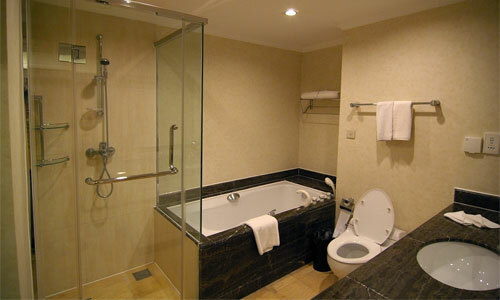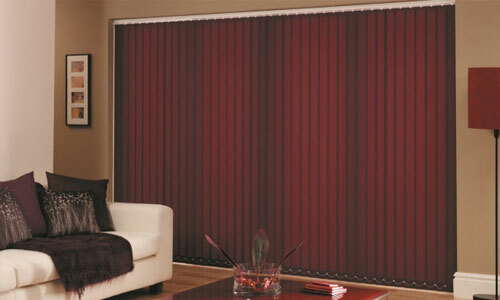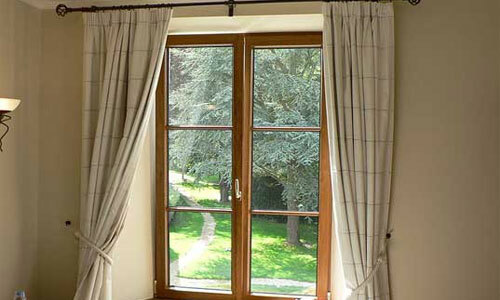Under current conditions, the consumer has a great technical capabilities in terms of arrangement of their own homes. Previously limited range of heating equipment today expanded. In the market there is a new equipment, introduced technical innovations and the latest technology in a cluster of home heating. Heated floors in this aspect now occupy a leading position. The very way the internal residential space heating due to underfloor heating in practice turned out to be much more efficient and economical.
In addition, for designers with the installation of underfloor heating in the room, offer unique opportunities for realization in the interior region. Opting for an underfloor heating system, you will be able to make your home a warm, cozy and above all comfortable. Heated floor can be used as the primary embodiment in heating a home or to make it an auxiliary heating technical means.

Scope underfloor determined by the tasks that you put before heating. Hence the question arises. What type of underfloor choose electric and water? There is in this case a reasonable "middle ground"?
Electric Radiant Floor Heating - "know-how" of our time
Each of us familiar water heating system. We are accustomed to the fact that our batteries circulates hot water. The lion's share in the segment occupied by the auxiliary heating heaters, in which the main work is done by a heat transfer fluid. Due to the high efficiency of the fluid heating system remains one of the most popular heating option. Warm water floor in this respect is the most successful engineering solution. However, there was a completely new heating system, electric water, versatile floor heating in recent years.
This construction is a combination of electrical heating and liquid heating method.
For reference: Why correct to say liquid rather than an electric water warm floor? The thing is that as a coolant in the system is not in use plain water and antifreeze and its various modifications.

As a result, competent technical solutions, this option was able to incorporate all the best qualities and characteristics of the electrical circuit water heating and underfloor heating. The technology laid the foundation of heat and pressure interaction principle. During operation of the electric heating element of the liquid is located within the heating circuit.
The heating circuit is a sealed plastic channel filled with antifreeze. In the middle of the plastic pipe, the entire length of its cable passes nickel chrome. This is one fundamental difference between this model of normal water floor heating, wherein the heating circuit circulates preheated boiler water. Stacking of plastic duct with electric heating installation is similar to the water pipes of floor heating. They use the same scheme of laying heating circuits: snail, snake, or spiral. Electric water floor is designed for installation under screed.
Evaluating the design of the device, the operation and stacking technology, you can safely get to work, making a warm floor with their hands.
Advantages of a combination of electricity and heat transfer fluid
The main and the main advantage, which has a new electric water underfloor heating circuit - is the lack of complex additional equipment. Without pump-mixer unit, reservoir, relief valve and flow meter is hard to imagine a full radiant floor heating in operation. In the case of electric water sexes situation is radically different. The system does not require the installation of a whole complex of servers, devices and assemblies.
On a note: If you have the funds, it is better to invest it in the purchase of a combined heating system. electro Radiant floor with their hands - it's real. This solution will save you from thermal calculations, technologically sophisticated, and the collector pump.
The following aspects can be safely attributed to the other benefits of this system:
- System uniformly heats the surface of the floor to predetermined temperature values;
- a quick exit of the heating equipment at optimum operating parameters;
- automatic control;
- safe operation;
- extremely low power consumption;
- quick and easy installation.
There is a clear improvement of the well-known to us all hot-water floor. Due to new technologies able to exclude from the system of the device a number of complex and expensive units and mechanisms. In addition, the combined system can be used for heating any premises. Of particular interest is the fact that electric water heating circuit equally effective when working in different temperature regimes. Such heating can be installed for heating the premises of any size (how funds are sufficient).

Important! The efficiency of electro water floors reaches almost 100%. The heated floor long keeps warm even after turning off the heating circuit.
From an environmental point of view, and security this scheme is almost safe. Automatic adjustment eliminates overheating of the heating elements. Accordingly, in a heated room will always maintain the desired temperature. When heating equipment such embodiment can use almost any floor covering.
On a note: allegations that the electric cable is laid on a large area, can cause adverse electromagnetic radiation - a myth.
On the shortcomings of electric water underfloor heating can say little. Compared with the water floor heating costs slightly exceed the usual amount. A one-time investment with the purchase of equipment can also significantly impact on your budget. However, in a complex, serious disadvantages of such a heating system in a practical way not observed.
Versions of the system. Design and Function
Today the market of heating equipment in the segment of underfloor heating, presented two models:
- products of Korean company Daewoo Enertec, warm water, electric floor XL Pipe (XL Pipe);
- product Korean company Caleo, capillary electric warm floor UNIMAT AQUA.
The latter option has the domestic counterparts, which are produced under license at Russian enterprises.
And the first heating system, and the second are some differences in the structure and operating principle of the heating elements, while all the rest, and the installation and function exactly the same.

Warm water floors Electrical XL Pipe
Consider what is characteristic of the heating system design using electricity. For the first acquaintance take the heating system, electric water underfloor XL Pipe (XL Pipe). The novelty in this case - is the structure of the heating element. The basis of the polyethylene pipe (wall thickness of 20 mm), the entire length of the heating cable is laid. It is important that this is not a simple cable and woven nickel - chrome filament enclosed in a Teflon sheath. Everything else is the inner space of the plastic pipe filled with a liquid coolant, which is in a static state. The tube is hermetically sealed single contour.
Obviously, in this case, you do not need a pump or reservoir. Figure - scheme clearly shows the internal structure of the heating circuit, the appearance of the plastic pipe and an exemplary diagram of laying floor electro water mark XL Pipe.

Coolant in this case acts as antifreeze, so the system should be called correctly - Electrical floor heating Liquid. Using heat from the electric heating element, the coolant is heated uniformly over the entire length of the heating circuit.
On a note: Unlike traditional water floors where the coolant water in different sections of the loop has different temperatures, Electrical - liquid scheme ensures uniform heating of the entire surface of the floor area.
The operating principle of an underfloor heating system in this case is based on the interaction of the heating element with temperature control sensors. The thermostat is for any heating system one of the main instruments, so in this case can not do without it.

Electric radiant floor operates on the following principle:
- The first - the inclusion in the work. Power supply provides electrical heating cable, which in turn heats the surrounding coolant.
- The second - the expansion of the heated coolant. Due to the fact that a small volume of liquid, and a large cable, power-intensive heating occurs.
- Third - increase the heated volume of the liquid, thereby creating a high pressure inside the plastic pipe (nucleate boiling).
- Fourth - a quick exit underfloor heating on the working modes.
Here are a few worth mentioning about the costs of operation of the electric element associated with the heating of the coolant. Power consumption in this case is 14.4 -15Vt per square. meter of floor heating, which is significantly lower than that required when the conventional electric floors. Due to the liquid coolant, even the disabled floor heating cools off in two to three times slower than cable heating system.
Capillary warm electric field
Another option Electrical water floors, capillary, is built on a different principle of operation. Herein lies the main difference between the systems: the small diameter of the heating pipes, so there was such a title. The plastic tube connected to a small electrical heating devices, which is both an electric heater and a feed entire heating circuit. The device controls the heating temperature, heats a heat transfer fluid and creates the operating pressure in the system. As is the case with the first embodiment electric water heating equipment, this embodiment is a closed sealed system.
On a note: small diameter water pipes require you to fill only 5-6 liters of distilled water, therefore for heating an amount sufficient coolant appliance power 2.4 kW.
Installation of a heating system is best done through a connection RCD and equipped with all the complex machine.

This system is a combination of floor heating is designed for heating small areas of the premises. Allowed system installation in rooms area not exceeding 20 m2.
Advantages of capillary heating system as follows:
- a functional heating unit;
- the presence of anti-freeze mode;
- automatic control of coolant heating temperature depending on the temperature inside the room;
- a heater power adjustment in the range 0.1 - 2.4 kW.
- Timer presence.
Mounting underfloor electro liquid type
The principal difference when installing floors electric water from traditional water heating systems, underfloor not. Both in the first and second case laying heating pipes is under the screed.
In order to make the installation of the floor with your hands, you will need thermal insulation materials, damping tape, metal foil or a heat exchanger. All these elements are component parts of flaky pie which is necessarily present when installing underfloor. The main task during installation, which stands in front of you is two things:
- competently equip insulating layer which will act as a thermal barrier. Insulation layer prevents heat leakage down, increasing the heating efficiency of the floor surface;
- used in the process of laying the heating circuit correctly matched circuit;
- establish control and Locking devices in a convenient and accessible location.
Stacking Electrical water sex differs from hinge mounting water in that pipe outputting unnecessary. Collector you do not have. All heating circuits are connected to the distributor, which can be placed in two variants:
- directly on the floor, in consequence of the concrete bursting with heating tubes;
- on the wall, at a distance of 10-15 cm. from the surface of a concrete screed;

power and control wires are ejected, connecting with thermostat. Followed by all the same, familiar wet work, pouring concrete screed. The recommended thickness of the screed during operation with warm water electro floors 30-50 mm. More is not necessary, is not enough power, less is also not recommended. A thin tie can be damaged mechanically, causing damage to the heating circuit.
On a note: laid heating channels all areas of heated space is not necessary. You can create electric water heating individual portion of the room. The operation of this portion is autonomous and does not depend on the work home heating system.
When working with this type of heating equipment is better to use the scheme of laying heating pipes - double snake. Recommended step stacking circuit 10-15cm. Do not forget that the walls of the maximum distance allowed for laying the heating circuits of 10-15 cm.
findings
In modern conditions can be successfully enough on its own to equip your house, apartment or other domestic premises sufficiently effective heating system. Underfloor heating has already proved in practice its effectiveness, efficiency and convenience. Liquid systems of underfloor heating using electricity output system similar to an entirely new level. Here, the principle - less hassle, more comfort. You absorb that put homes, water heating or give preference to liquid electric heating system devices.



